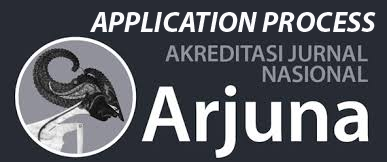Peningkatan Pengetahuan Perawat Tentang Pemberian Obat DOTS pada Pasien TB di RSU IPI Medan
DOI:
https://doi.org/10.57214/pengabmas.v3i1.613Keywords:
Coaching, Community, Knowledge, DOTS, TuberculosisAbstract
TB is one of the 10 causes of death and the primary cause of infectious agents in the world. The prevalence of tuberculosis patients in 2020 amounted to 929 patients. Some of the influencing factors are behavioral factors, namely knowledge, attitude and behavior in the implementation of routine medication compliance. The method used was observational descriptive with 30 participants who were residents of Sampali Village, Percut Sei Tuan District. The PkM team provided the material in question: 1) Definition of tuberculosis disease, 2) Causes of tuberculosis disease, 3) Signs and symptoms of tuberculosis disease, 4) Complications of tuberculosis disease, and 5) Prevention of tuberculosis disease. After the implementation of the activity: 1) The majority of the understanding of tuberculosis (TB) is good as many as 25 people, 2) The causes of tuberculosis (TB) are mostly good as many as 27 people, 3) The signs and symptoms of tuberculosis (TB) are mostly good as many as 26 people, 4) The majority of tuberculosis (TB) complications are good as many as 27 people, and 5) Prevention of correct transmission of tuberculosis (TB) all participants have been able to as many as 27 people. The increase in knowledge and skills of participants is because the community has a great desire to treat and prevent dengue fever in family members at home.
References
Ariani, Ni Wayan., Rattu, A. J. M., & Ratag, B. (2015). Factors Associated With Take Drug Regularity of Patients Pulmonary TB In the Work Area of Modayag Public Health Center, East Bolaang Mongondow District. JIKMU, Suplemen Vol, 5. No, 1 Januari 2015
Kozier,B.,Glenora Erb, Audrey Berman dan Shirlee J.Snyder. (2010). Buku Ajar Fundamental Keperawatan ( Alih bahasa : Esty Wahyu ningsih, Devi yulianti, yuyun yuningsih. Dan Ana lusyana). Jakarta :EGC
William M.C et al (2020). Exhaled Mycobacterium tuberculosis output and detection of subclinical disease by face-mask sampling: prospective observational studies, Lancet Infect Dis 2020; 20: 607–17, https://doi.org/10.1016/ S1473-3099(19)30707-8
Yani, D. I., Hidayat, Y.F., Amrullah, A.A. (2018). Knowledge, Attitude, And Practice Of Cough Etiquette In Patients With Tuberculosis In The Community Health Centers, Belitung Nursing Journal. 2018 October;4(5):482-491.
Osterberg, L., dan Blaschke, T., 2005, Adherence to Medication, The New England Journal of Medicine, 353, 487-97
Fang X.Y, Dan, Liu, Jun et al., (2021). Comparative study on the antituberculous effect and mechanism of the traditional Chinese medicines NiuBeiXiaoHe extract and JieHeWan, Duan et al. Military Medical Research (2021) 8:34, https://doi.org/10.1186/s40779-021-00324-5
Kemenkes RI (2019). Laporan Provinsi Sumatera Utara Riskesdas 2018. Lembaga Penerbit Badan penelitian dan Pengembangan Kesehatan, Jakarta.
Marahatta SB, Yadav RK, Giri D, Lama S, Rijal KR, Mishra SR, et al. (2020) Barriers in the access, diagnosis and treatment completion for tuberculosis patients in central and western Nepal: A qualitative study among patients, community members and health care workers. PLoS ONE 15(1): e0227293. https://doi.org/10.1371/journal.pone.0227293
Collette N Classen, Robin Warren, Madeleine Richardson, John H Hauman, Robert P Gie, James H P Ellis, Paul D van Helden, Nulda Beyers. (1999). Impact of social interactions in the community on the transmission of tuberculosis in a high incidence area, DOI: 10.1136/thx.54.2.136 · Source: PubMed.
Anggeria E, Sipayung Y.Y, Zebua K.M.S. (2021). Social Interactions of TB Patients at Helvetia Community Health Center in Medan, CARING: Indonesian Journal of Nursing Science (IJNS) Vol. 3, No.1, 2021| 10-16.








